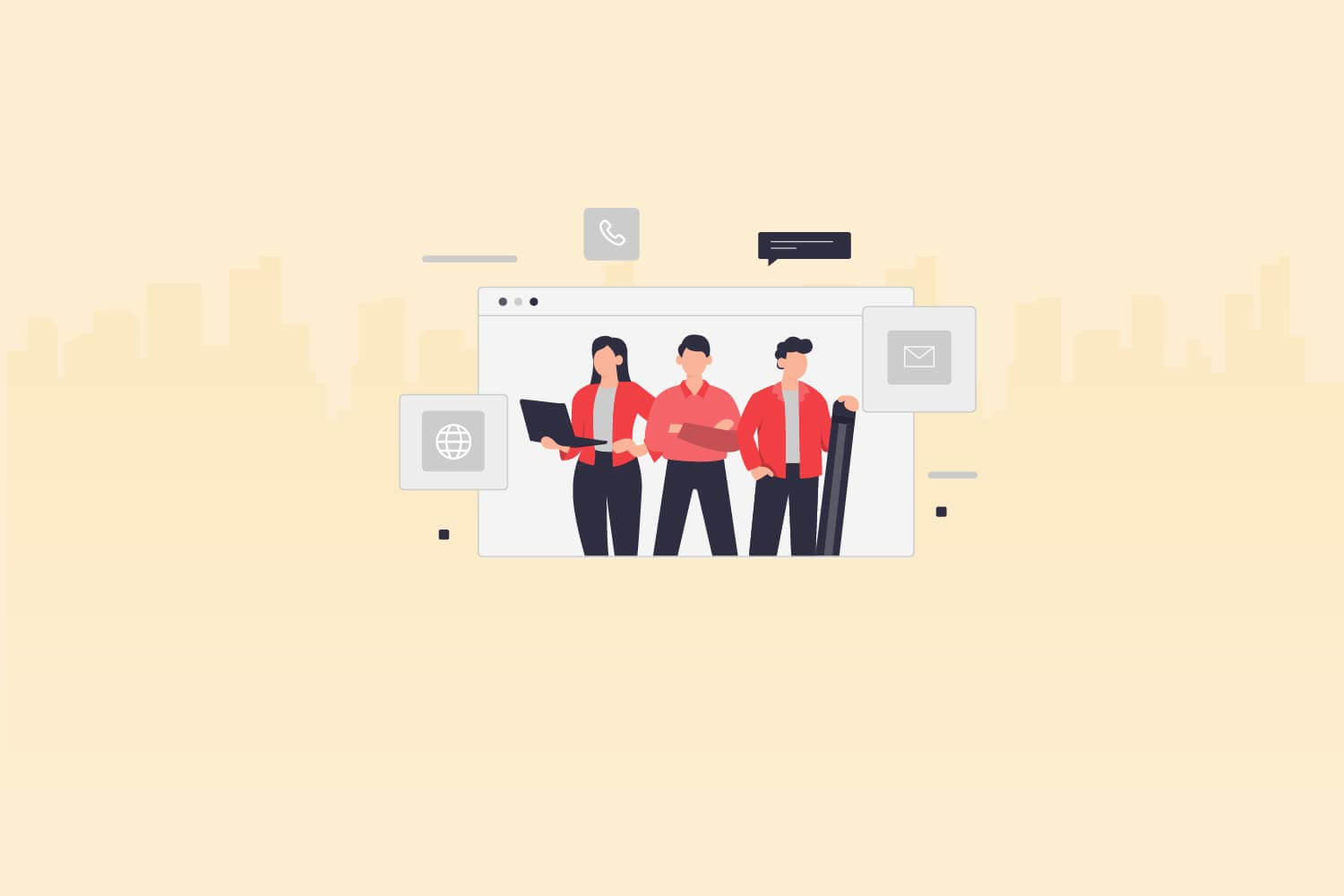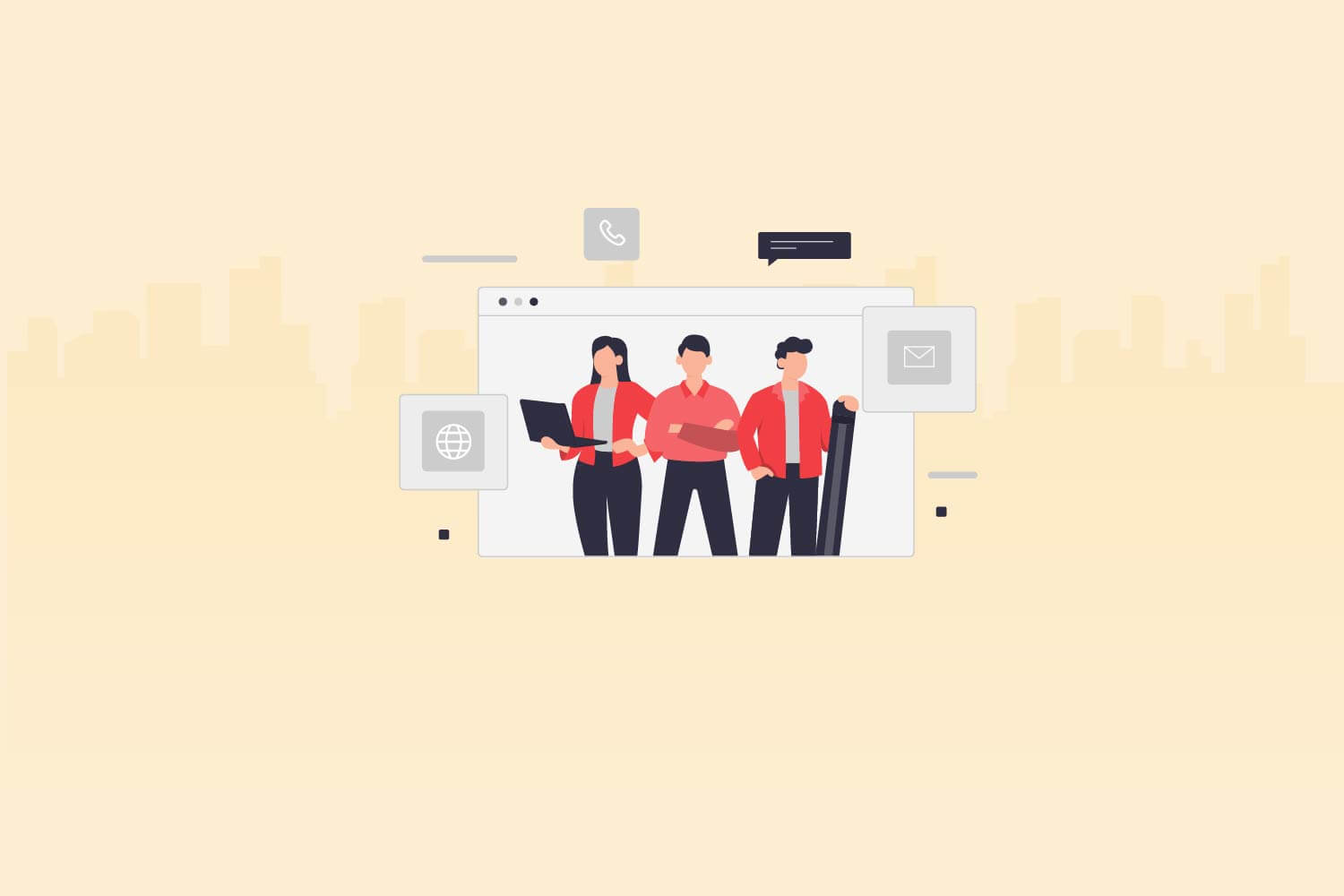In the ever-evolving landscape of human resources management, technology has emerged as a powerful ally in optimizing various aspects of organizational operations. One area where technology’s impact has been particularly transformative is in the realm of compensation and benefits. Traditional methods of managing compensation packages and benefits administration are giving way to more efficient and streamlined processes, thanks to the integration of innovative technological solutions.
According to a survey conducted by Deloitte, 77% of organizations are actively investing in HR technology to streamline compensation and benefits processes, enhance employee experiences, and drive data-driven decision-making.
In this article, we delve into how businesses can leverage technology to support and enhance their compensation and benefits strategies, ultimately fostering a more satisfied and engaged workforce.
Enhancing compensation and benefits through technology
In today’s rapidly evolving business landscape, where every advantage counts, leveraging technology to enhance compensation and benefits strategies has become a game-changer. The integration of technology into traditional human resources practices has brought forth a myriad of opportunities to streamline processes, improve accuracy, and offer a more personalized experience for employees.
When it comes to compensation management, technology offers advanced solutions that simplify complex tasks. Automated compensation systems enable HR professionals to efficiently manage salary structures, performance-based incentives, and bonuses, ensuring that employees are rewarded fairly and consistently. Additionally, these systems minimize the risk of errors that can result from manual calculations, ultimately boosting both employee trust and operational efficiency.
Benefits administration has also undergone a significant transformation with the aid of technology. Digital platforms empower employees to access and manage their benefit packages at their convenience, facilitating a self-service approach. This not only reduces the administrative burden on HR teams but also empowers employees to make informed decisions about their benefits, fostering a sense of ownership over their well-being.
Furthermore, technology’s role in compensation and benefits extends beyond process optimization. Data-driven insights generated by sophisticated analytics tools provide HR professionals with valuable information to make informed decisions. By analyzing compensation trends, performance data, and employee preferences, organizations can tailor their compensation and benefits strategies to align with the needs and expectations of their workforce.
In essence, the integration of technology into compensation and benefits practices not only streamlines operations but also drives engagement, fosters transparency, and supports the overall growth and success of an organization. The subsequent sections of this article will delve deeper into various aspects of how technology can be harnessed to revolutionize compensation and benefits management.
Leveraging software solutions for compensation management
In the realm of modern HR management, the role of technology in shaping efficient and effective compensation strategies cannot be overstated. Organizations are increasingly turning to specialized software solutions to navigate the complexities of compensation management. These software platforms offer a comprehensive suite of tools designed to streamline the entire compensation process, from structuring pay scales to managing performance-related bonuses.
One of the key advantages of leveraging compensation management software is its ability to ensure fairness and equity in salary structures. These platforms provide a centralized hub where HR professionals can define and manage various factors that influence compensation, such as job roles, responsibilities, skills, and performance metrics. This transparency promotes consistency in compensation decisions, reducing the potential for biases and disparities.
Moreover, these software solutions simplify the process of designing compensation packages that align with industry standards and the organization’s financial goals. By offering access to market data and industry benchmarks, HR teams can make informed decisions about competitive salary ranges, ensuring that the organization remains attractive to top talent.
Additionally, compensation management software enhances the efficiency of performance-based compensation. These platforms allow for the seamless integration of performance metrics, enabling HR professionals to accurately link individual or team achievements to corresponding rewards. As a result, employee motivation and engagement receive a significant boost, as the connection between performance and compensation becomes more transparent.
Embracing technology through compensation management software empowers organizations to establish fair, competitive, and performance-driven compensation strategies. The subsequent sections of this article will delve deeper into the various facets of technology’s role in revolutionizing compensation and benefits management.
Automating payroll processing for accuracy and efficiency
The integration of technology in the realm of compensation and benefits extends to the crucial task of payroll processing, a function that demands precision and timeliness. Payroll automation has emerged as a transformative solution, offering organizations a streamlined approach to calculating and disbursing employee salaries, taxes, and deductions. This not only enhances accuracy but also frees up valuable time for HR professionals to focus on strategic initiatives.
One of the primary benefits of automating payroll is the drastic reduction in manual errors. Traditional manual methods are susceptible to mistakes that can lead to overpayments, underpayments, and compliance issues. Payroll automation software, on the other hand, performs calculations with a high degree of accuracy, ensuring that employees receive their rightful compensation and statutory deductions are correctly applied.
Furthermore, automation expedites the payroll process, allowing for seamless and timely disbursement of salaries. This is particularly crucial in large organizations with numerous employees. Automated systems can generate payslips, calculate taxes, and process direct deposits within a fraction of the time it would take using manual methods.
Payroll automation also plays a pivotal role in ensuring compliance with tax regulations and labor laws. These systems are designed to stay updated with the latest legal requirements, helping organizations avoid penalties and legal complications. By centralizing all payroll-related data, automation software simplifies the process of generating reports for audits and compliance checks.
In essence, automating payroll processing not only boosts accuracy and efficiency but also minimizes the administrative burden associated with this critical task. As the subsequent sections of this article will illustrate, technology’s impact on compensation and benefits management extends to various other areas that contribute to a holistic and optimized HR function.
Digitalizing benefits administration for employee convenience
In the evolving landscape of compensation and benefits management, the advent of technology has brought about a paradigm shift in the way employee benefits are administered. Traditional approaches, often involving manual paperwork and lengthy processes, are giving way to digital solutions that prioritize employee convenience and engagement. Digital benefits administration platforms have emerged as a cornerstone of modern HR strategies, catering to a tech-savvy workforce’s expectations for seamless and user-friendly experiences.
One of the key advantages of digital benefits administration is the empowerment it provides to employees. With user-friendly interfaces accessible through web portals or mobile apps, employees gain the ability to explore, select, and manage their benefits with ease. This self-service approach puts the control back in employees’ hands, allowing them to make personalized choices that suit their unique needs.
Moreover, digital platforms centralize benefits information, reducing the need for HR personnel to manage and distribute physical documents. This not only streamlines administrative tasks but also contributes to a more environmentally sustainable approach by reducing paper usage.
Digital benefits administration also enhances transparency and communication. Employees can access detailed information about their benefit options, coverage, and utilization at any time, promoting a clearer understanding of their overall compensation package. Additionally, these platforms often feature communication tools that enable HR teams to share important updates, announcements, and educational resources with employees.
The digitalization of benefits administration signifies a transition towards more efficient, employee-centric, and environmentally conscious practices. The subsequent sections of this article will delve further into the diverse ways technology can revolutionize compensation and benefits management, fostering a more engaged and satisfied workforce.
Data-driven insights: Using analytics for informed decisions
In the realm of compensation and benefits, harnessing the power of data-driven insights has become a strategic imperative. The marriage of technology and analytics enables organizations to make well-informed decisions that drive employee satisfaction, optimize costs, and align compensation strategies with broader business objectives.
One of the primary applications of data analytics in this context is compensation benchmarking. By analyzing market trends and industry standards, organizations can ensure that their compensation packages remain competitive. Analytics tools provide invaluable insights into salary ranges for different job roles, helping organizations attract and retain top talent.
Performance management also benefits significantly from data-driven insights. By analyzing performance metrics and correlating them with compensation outcomes, organizations can identify high-performing employees, align compensation with individual contributions, and ultimately foster a culture of meritocracy.
Moreover, predictive analytics plays a crucial role in succession planning and talent development. By assessing employee performance, skills, and potential, organizations can identify individuals who are likely to take on leadership roles in the future. This enables proactive development initiatives and helps organizations retain and nurture their top performers.
Data analytics not only informs strategic decisions but also supports compliance efforts. Organizations can use analytics to monitor compensation practices for fairness and identify any potential disparities that may arise due to bias or other factors.
Data-driven insights generated by technology-driven analytics offer organizations a competitive edge in shaping their compensation and benefits strategies. As the subsequent sections of this article will explore, the integration of analytics into compensation management is a testament to how technology continues to reshape the HR landscape for the better.
Ensuring security and compliance in technology implementation
While the integration of technology in compensation and benefits management offers a multitude of advantages, it also brings to the forefront the critical need for security and compliance. As organizations digitize sensitive employee data and financial information, ensuring the protection of these assets becomes paramount to maintaining trust and legal adherence.
One of the key challenges in technology implementation is safeguarding data privacy. Compensation and benefits platforms house a wealth of personal information, from salary details to health benefits. Organizations must implement robust security measures, including encryption and access controls, to prevent unauthorized access and data breaches.
Furthermore, compliance with data protection regulations, such as GDPR and CCPA, is non-negotiable. Technology solutions must be designed with these regulations in mind, ensuring that employee data is collected, stored, and processed in accordance with legal requirements. Failure to do so can result in hefty fines and reputational damage.
In the context of compensation management, transparency is also essential. As organizations adopt technology to automate processes and make compensation decisions, it’s crucial to maintain clear documentation of the rationale behind these decisions. This not only supports fair compensation practices but also aids in demonstrating compliance with anti-discrimination laws.
In conclusion, the integration of technology comes with a responsibility to prioritize security and compliance. Organizations must carefully vet technology providers, implement robust security protocols, and adhere to data protection regulations. By doing so, they can harness the benefits of technology without compromising the privacy and rights of their employees. The subsequent sections of this article will delve deeper into how technology is reshaping compensation and benefits management while maintaining a strong focus on security and compliance.
Remote work and compensation: Technology’s role in adapting
The rise of remote work, accelerated by global events, has brought about a paradigm shift in how organizations approach compensation and benefits. Technology plays a pivotal role in this shift, enabling businesses to navigate the complexities of remote work while ensuring equitable compensation practices.
Remote work has necessitated the reevaluation of compensation structures. Organizations must consider factors such as cost of living in various locations, as employees can now work from anywhere. Here, technology aids in collecting and analyzing data related to regional salary trends, enabling companies to adjust compensation fairly based on geographical considerations.
Furthermore, remote work has highlighted the importance of flexible benefits. Technology-driven platforms enable organizations to offer a range of benefits that cater to the diverse needs of remote employees. From mental health support apps to virtual wellness programs, technology facilitates the delivery of benefits that enhance employee well-being and engagement, regardless of their physical location.
Communication and collaboration tools have become lifelines for remote teams, and their role extends to compensation discussions. Video conferencing and messaging platforms facilitate transparent conversations about compensation, performance evaluations, and career growth. This ensures that remote employees remain connected and informed, despite physical distance.
Technology acts as a bridge between remote work and compensation adaptation. By leveraging data analytics, communication tools, and flexible benefits platforms, organizations can navigate the challenges of remote work while ensuring fair compensation practices. The subsequent sections of this article will explore various ways technology is revolutionizing compensation and benefits management, fostering resilience and adaptability in the modern workforce landscape.
The future landscape: Emerging technologies in compensation and benefits
As technology continues to evolve at an unprecedented pace, the realm of compensation and benefits is poised for even more transformative changes. Emerging technologies hold the potential to revolutionize how organizations approach employee rewards and well-being, paving the way for a more holistic and personalized experience.
Artificial Intelligence (AI) and Machine Learning (ML) are poised to play a pivotal role in compensation management. These technologies can analyze vast amounts of data to identify patterns, helping organizations make data-driven decisions about salary adjustments, promotions, and bonuses. AI-powered chatbots can also provide employees with instant answers to compensation-related queries, enhancing communication and transparency.
Blockchain technology holds the promise of secure and transparent transactions, which could be applied to compensation and benefits processes. Smart contracts can ensure that payments are made accurately and automatically, while maintaining an immutable record of transactions for compliance purposes.
Personalization is another trend that technology is likely to amplify. With access to more data about employee preferences and needs, organizations can tailor compensation packages and benefits offerings on an individual level. This customization enhances employee satisfaction and loyalty.
Virtual and augmented reality technologies have the potential to reshape benefits experiences. Employees could virtually explore wellness programs, attend benefits fairs, or even undergo remote training sessions, all of which contribute to a more engaging and convenient benefits ecosystem.
The future of compensation and benefits management is intricately intertwined with emerging technologies. By harnessing the power of AI, blockchain, personalization, and immersive technologies, organizations can craft compensation strategies that not only attract and retain top talent but also elevate the overall employee experience. As the final section of this article, it showcases the ongoing evolution of compensation and benefits in the era of technological advancement.
Conclusion
As businesses navigate the intricacies of modern workforce management, embracing technology to bolster compensation and benefits strategies has become not just a choice, but a necessity. The potential to automate complex processes, gain data-driven insights, and offer personalized benefits experiences has revolutionized how organizations attract, retain, and motivate their employees.
By staying abreast of emerging technologies and maintaining a keen focus on security and compliance, companies can harness the full potential of technology to create a workplace that values and supports its most valuable asset – the people driving the organization toward success. In this dynamic landscape, the fusion of compensation and benefits with technology isn’t just a trend; it’s a strategic imperative for organizations aiming to thrive in the digital age.
Testlify offers a range of assessments and challenges that allow you to gauge candidates’ knowledge, problem-solving skills, and creativity in real-world scenarios. With our extensive test library, you can objectively evaluate candidates’ abilities, ensuring you shortlist the most talented individuals efficiently. Ready to unlock the potential of your hiring process with our talent assessment tool? Book a free 30-minute live demo with Testlify. Our expert team will guide you through the platform, showcasing relevant skill tests tailored to your organization’s needs. With our support, you can streamline candidate selection, saving valuable time and resources.








